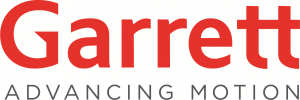CMS reports on 2015 European M&A activity and predicts an uncertain year ahead.
24.03.2016Company: CMS
2015 was a record year for European M&A in value terms, but deal volume was down 6%.
CMS advised on 391 deals in 2015, 13% more than the previous year.
2016 is proving a riskier M&A environment compared to 2015.
CEE deal activity likely to be driven mainly by mid- market transactions in 2016.
The 8th Annual CMS M&A Study predicts an uncertain 2016 despite a record M&A year in 2015. CMS analysed nearly 2,800 of its non-listed European public and private company deals between 2010 and 2015 to highlight M&A market trends.
Helen Rodwell, Head of the CEE Corporate Practice commented, “In Central Eastern Europe there are still many interesting opportunities for transactions, particularly in the mid-market space, which will attract strategic investors as well as private equity funds. In terms of economic growth the CEE region is currently one of the most buoyant global markets, however political changes can be seen to have a direct impact on the levels of new investment. As the landscape changes in 2016, sellers may have to lower their price expectations or heighten their risk appetite.”
Stefan Brunnschweiler, Partner and Global Head of the CMS Corporate/M&A Group, added, “We have moved into a less stable environment in 2016 after a record year for M&A in 2015, but the major strategic moves made in so many industries in 2015 are bound to elicit a forthright response from competitors. Opportunities for decisive M&A continue.”
The more uncertain and risky deal environment is attributed to such factors as the long-predicted slowdown of China’s economic growth and the greatest migration to Europe for a century across a fragile Schengen zone. The report also lists US interest rates, US elections, a more aggressive corporate tax climate, the upcoming EU referendum in the UK and the clampdown on inversion deals.
The study confirms 2015 deal value in Europe was up 22% to EUR 990bn, despite a drop in volume of 6%. 2015 also saw the highest final quarter on record with deal value exceeding EUR 420bn. CMS advised on 13% more deals in 2015 than the previous year.
The study found that buyers, in general, had to pay more to complete deals and spent more time and energy negotiating the price. An increasing number of transactions focused on pricing provisions. 49% of deals had a purchase price adjustment provision and 56% of the remainder had a ‘locked box’ term (compared to 43% and 41% respectively in the previous five years). Meanwhile, buyers were more relaxed about other risk allocation provisions, with sellers being able to negotiate lower liability caps and limitation periods compared with the previous five years.
CEE highlights:
• Buyers and sellers in CEE favour arbitration as a dispute resolution mechanism. Arbitration clauses were used in 72% of M&A transactions in CEE in 2015 compared to 36% for Europe as a whole as parties are keen to avoid the public eye and the courts in jurisdictions here proceedings are time-consuming and the outcome unpredictable.
• In CEE the “earn-out” risk-sharing mechanism is less popular than the European average. “Earn-out” makes the final purchase price of a company dependent on its results after closing the transaction, often used for investments in new sectors or in uncertain economic times, when a company’s results are difficult to predict.
• Material Adverse Change clauses are used in less than 1/5 of transactions CMS worked on. Whereas MAC clauses are used in the vast majority of US M&A transactions (91%), CMS experience indicates that in Europe and CEE such clauses are much less common (16% and 18% transactions respectively) and appear most often in the real estate, financial and energy sectors.
• Sellers are effectively limiting their financial liability in transactions. Their ability to reduce liability caps to less than 50% of the purchase price in 2015 compared with the previous five year average was a feature in virtually every region (CEE: from 52% to 42%). In contrast, in the US the seller’s financial liability for failure to comply with the terms of the agreement are usually set at 10% of the sale price which may indicate a greater risk appetite.
• Warranty & Indemnity insurance is increasingly popular. Insurance allows buyers to allocate part of legal and business risk to the insurer, compensating for the lower financial liability of the seller. This makes it easier for the buyer to reach an agreement with the seller, while the seller can provide comfort for the final result of the transaction.
For more information, please contact:
Erik Werkman
Head of BD and Marketing, CMS Prague
T: +420 296 798 701
E: erik.werkman@cms-cmck.com







